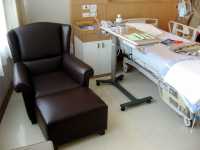Author Interviews, COVID -19 Coronavirus, Hospital Acquired, Infections, JAMA / 10.09.2020
Large US Academic Medical Center Study Finds Low Risk Of COVID-19 Transmission to Patients Within Hospital
MedicalResearch.com Interview with:
Chanu Rhee MD MPH
Associate Hospital Epidemiologist
Attending Physician, Infectious Diseases and Critical Care Medicine
Assistant Professor of Medicine
Brigham and Women's Hospital
MedicalResearch.com: What is the background for this study?
Response: Many patients have been avoiding essential care during the COVID-19 pandemic due to fear of contracting SARS-CoV-2 in healthcare settings. Little is known, however about the adequacy of infection control practices in preventing nosocomial COVID-19 in U.S. acute care hospitals.
We therefore conducted this observational study to determine the incidence of nosocomial COVID-19 in patients hospitalized at a large academic medical center in Boston (Brigham and Women’s Hospital) during the first 12 weeks of the surge in Massachusetts. (more…)















